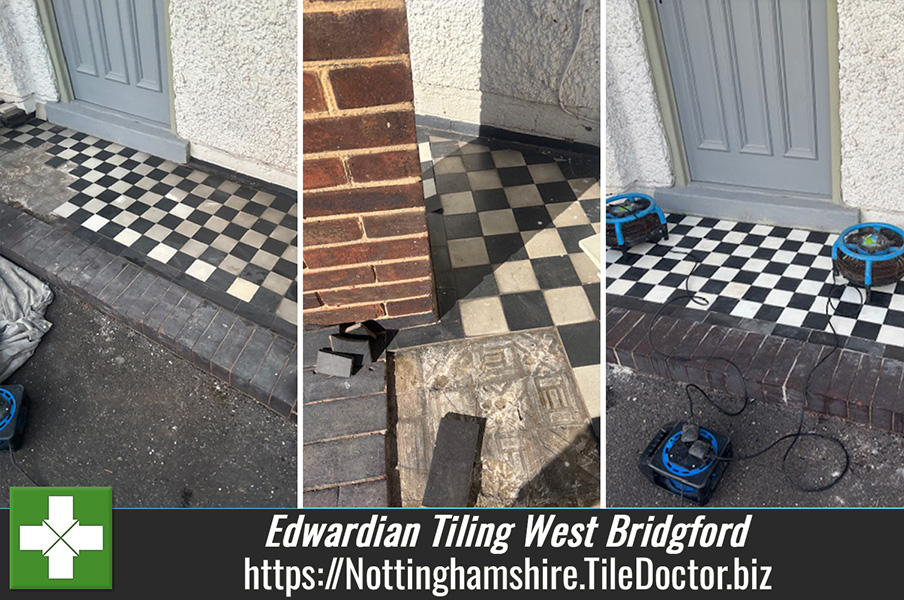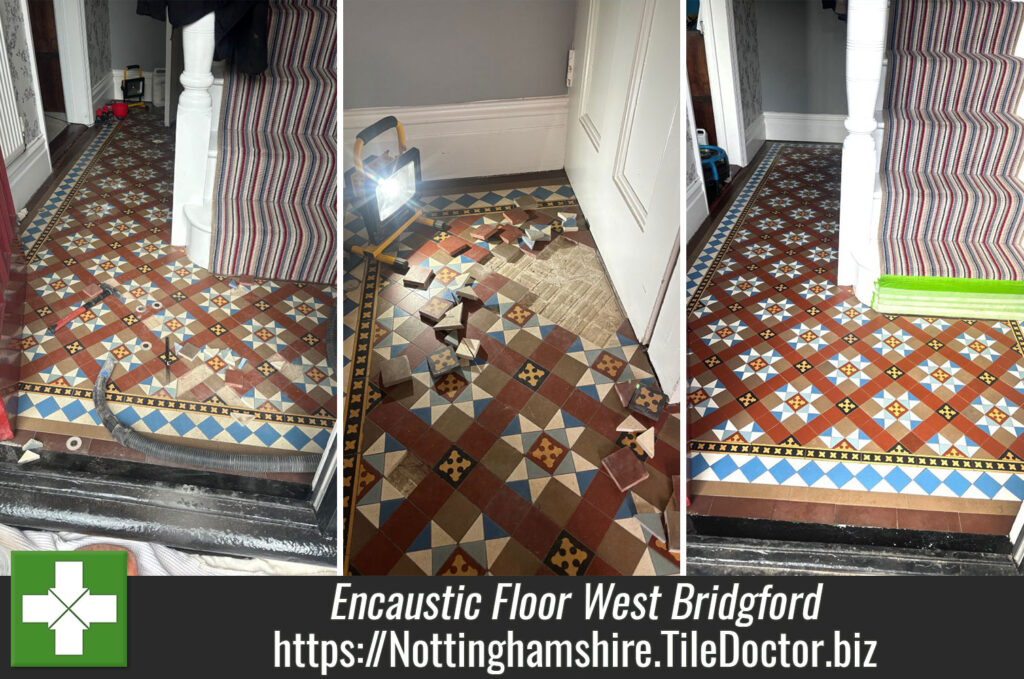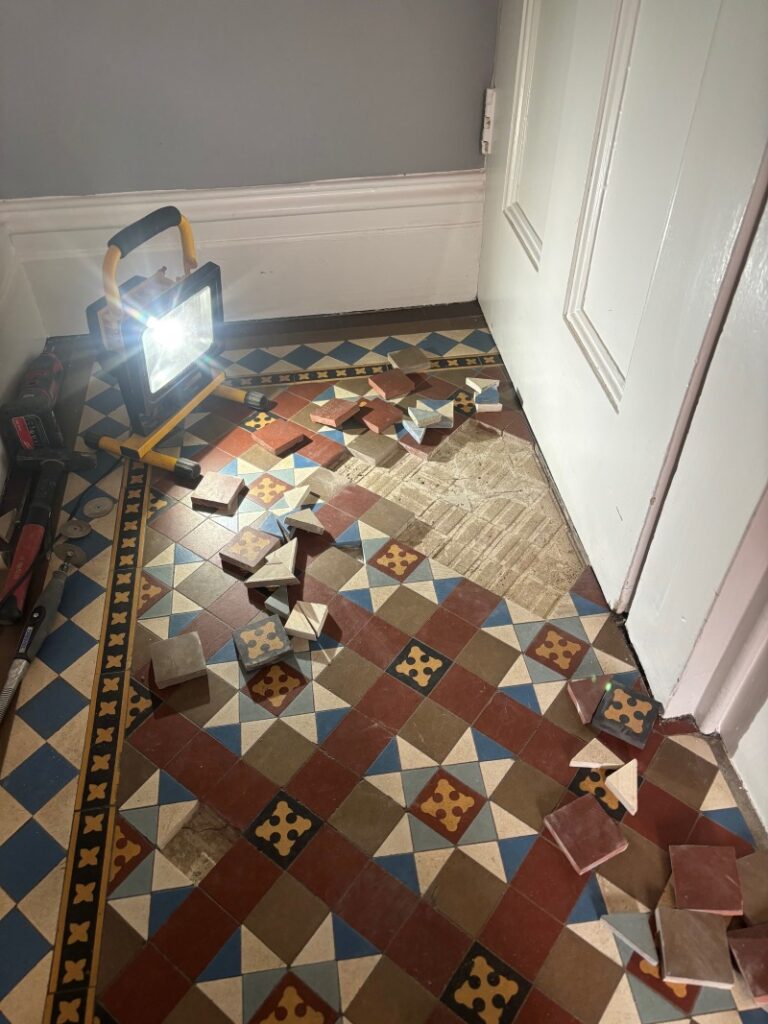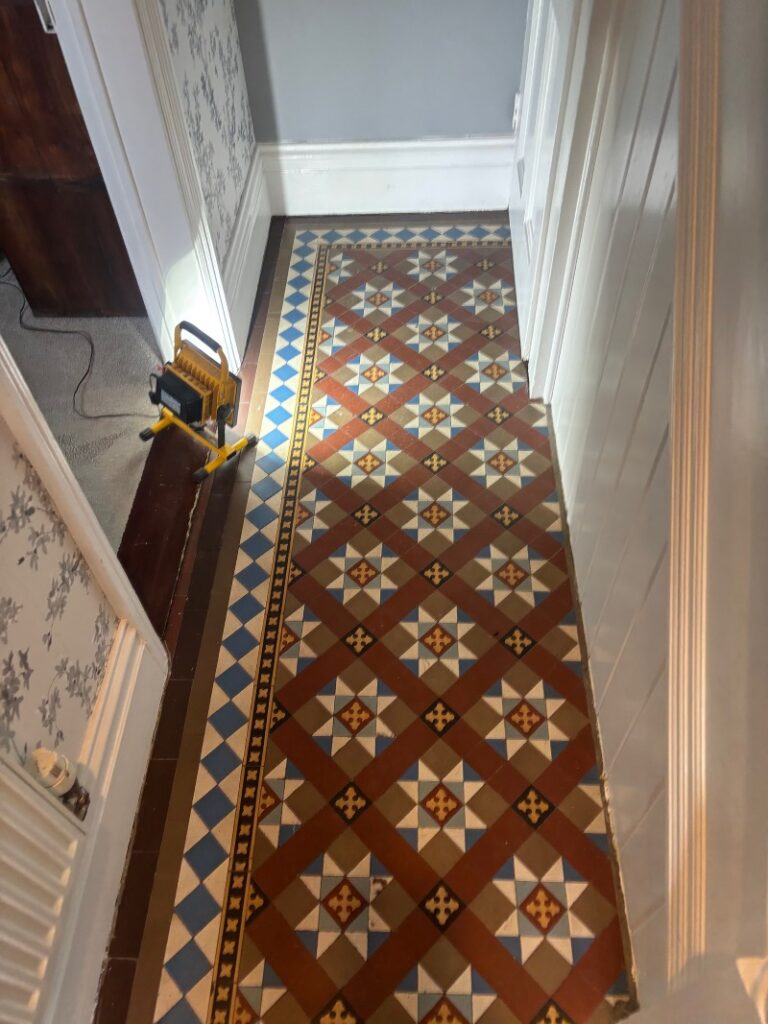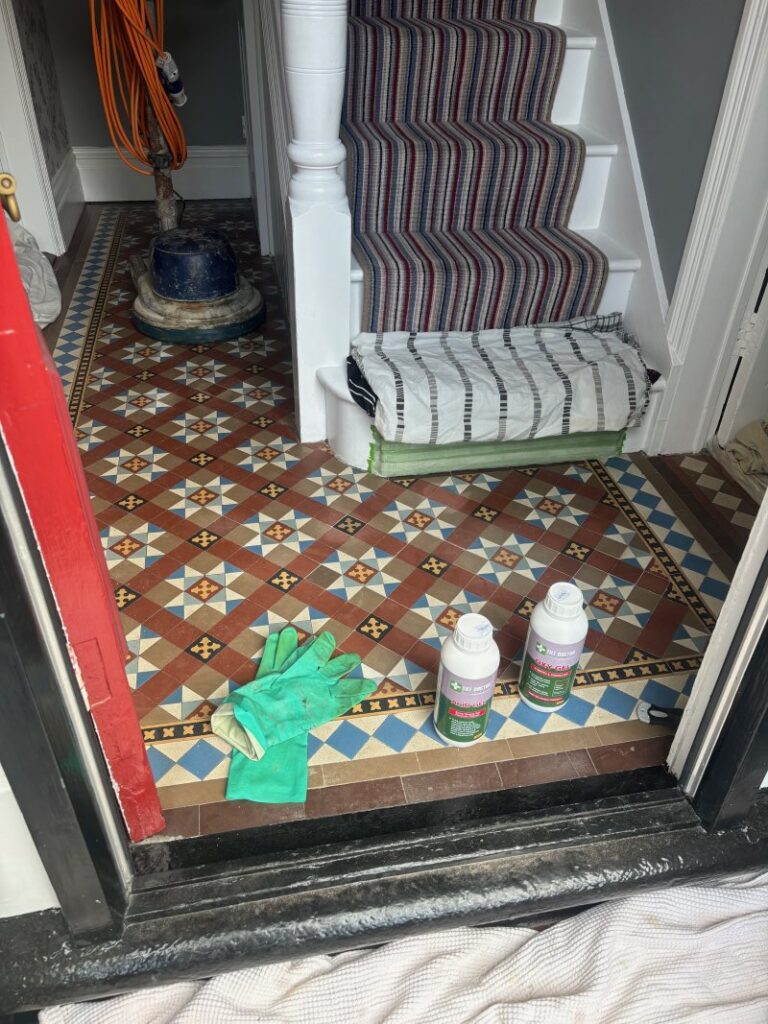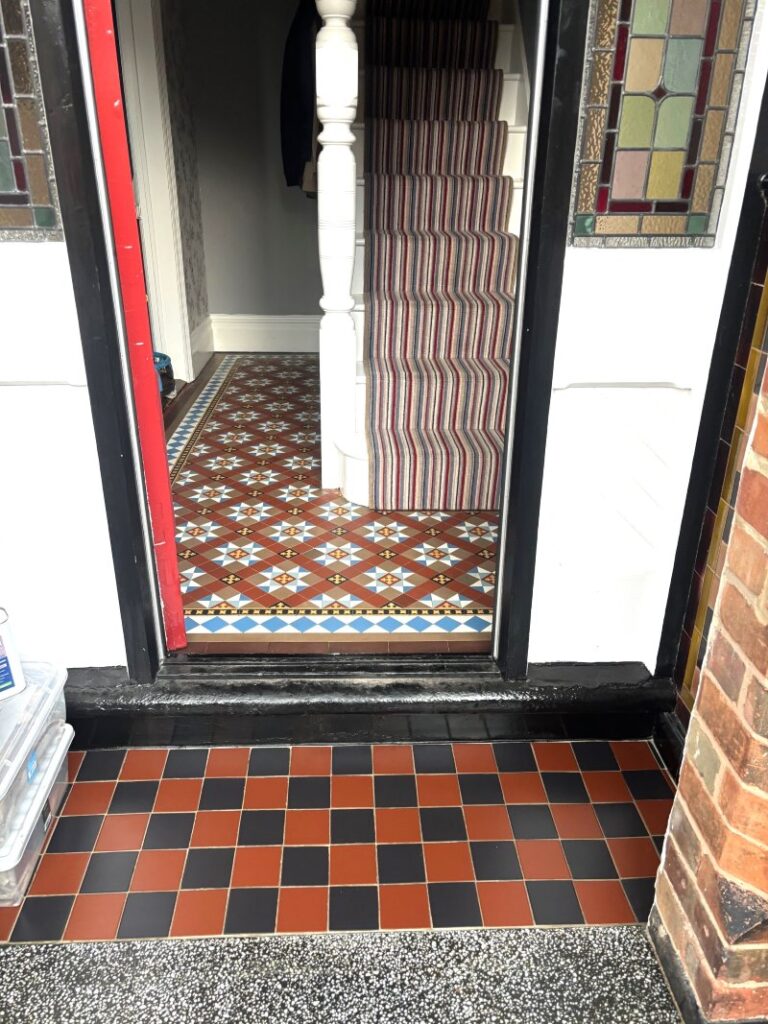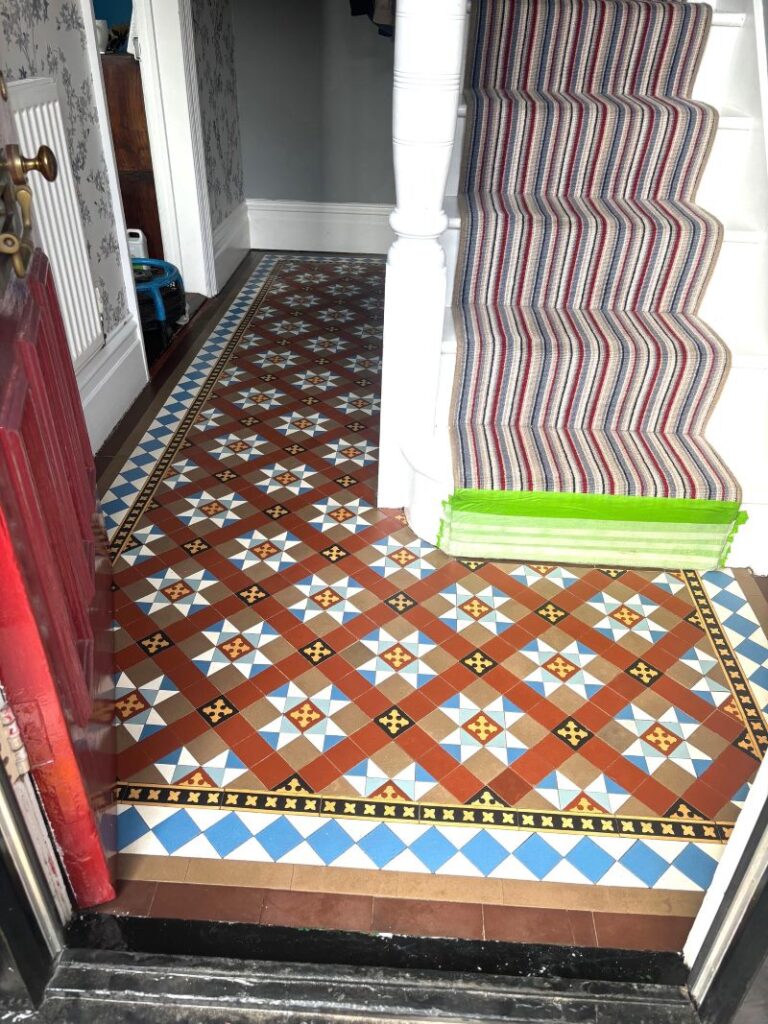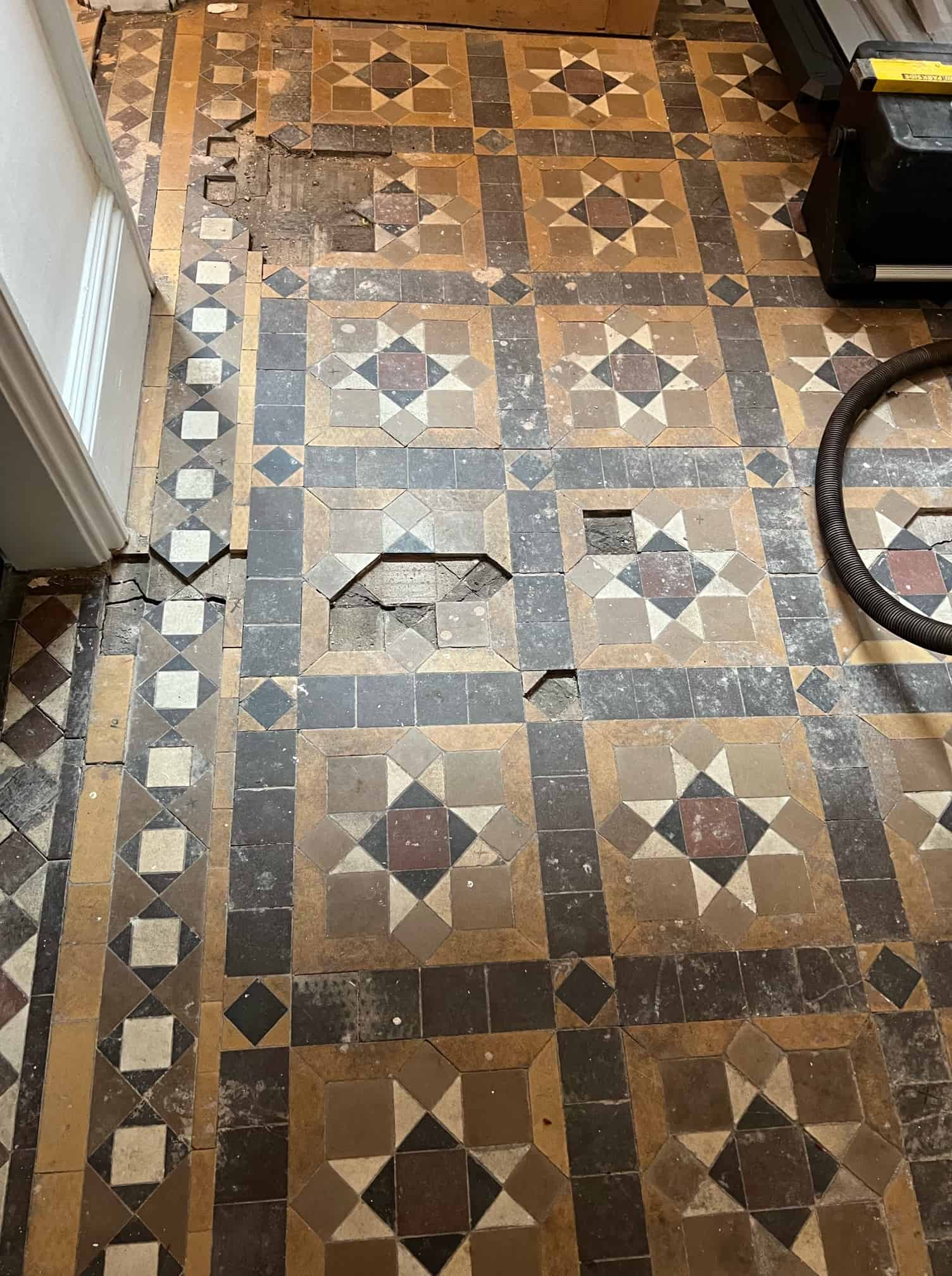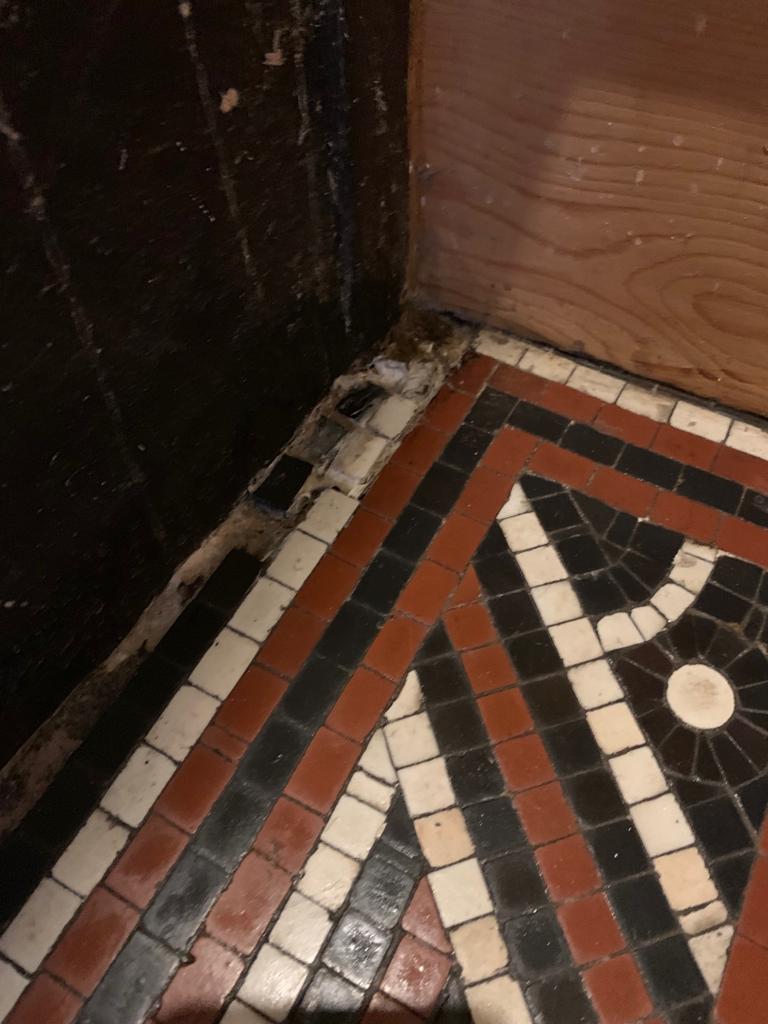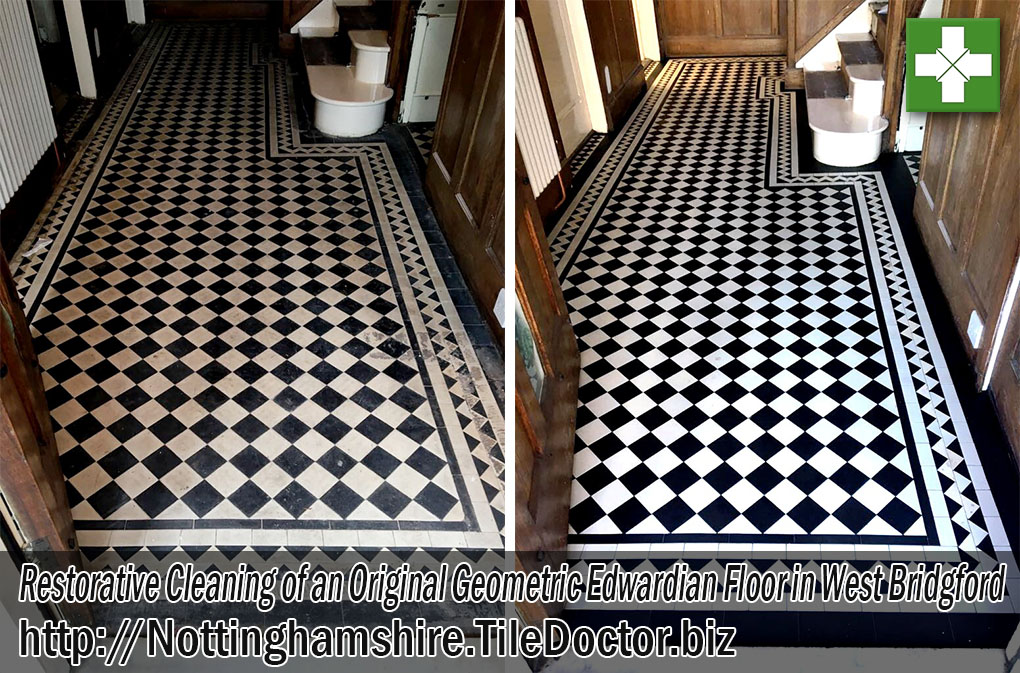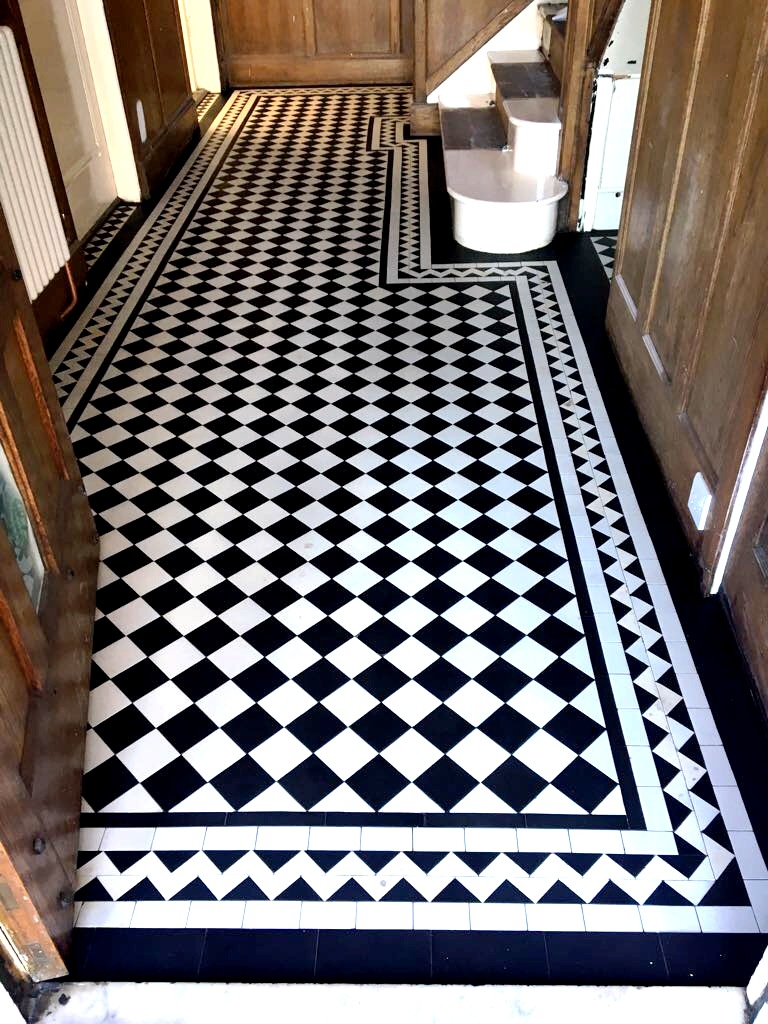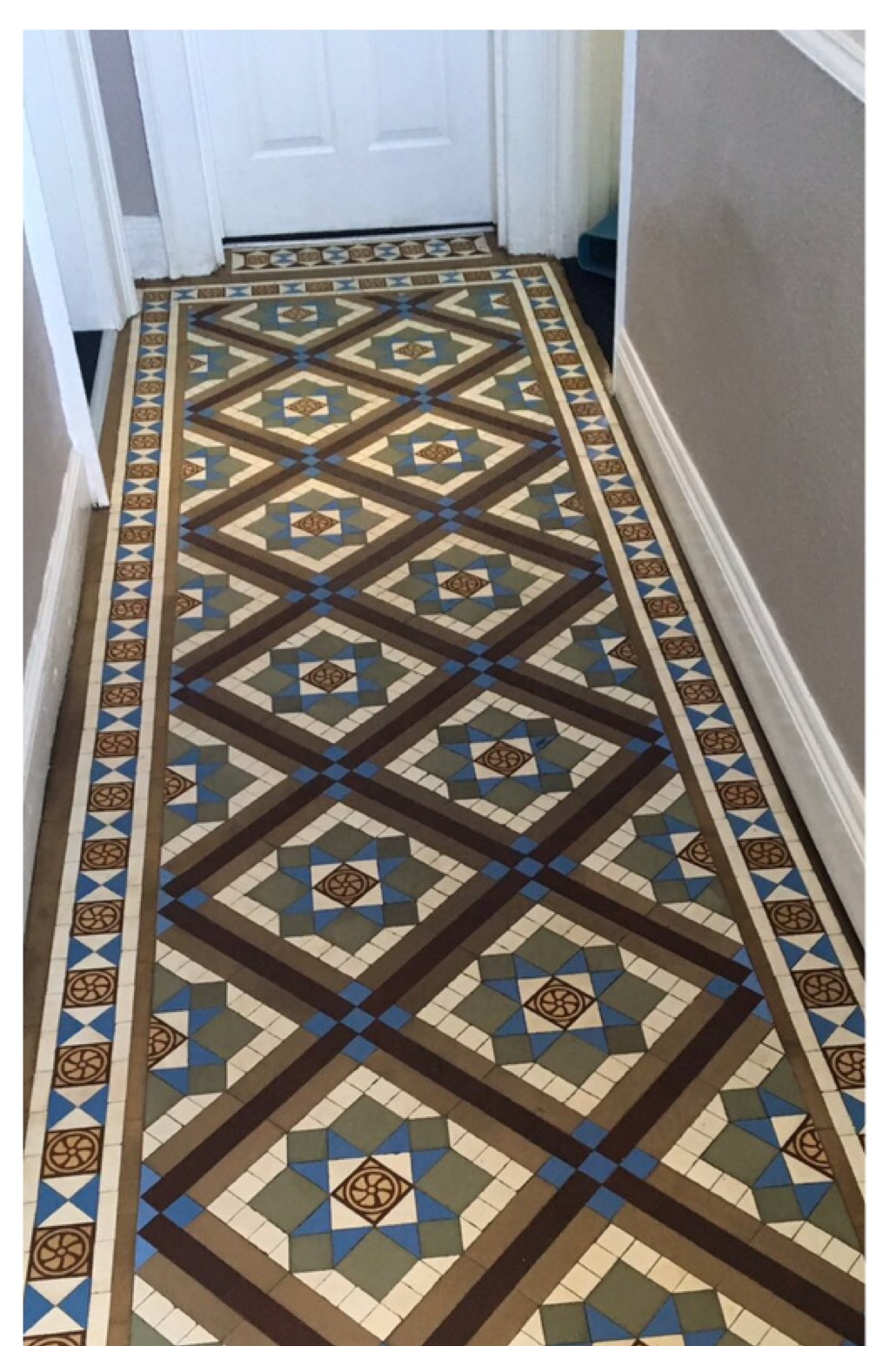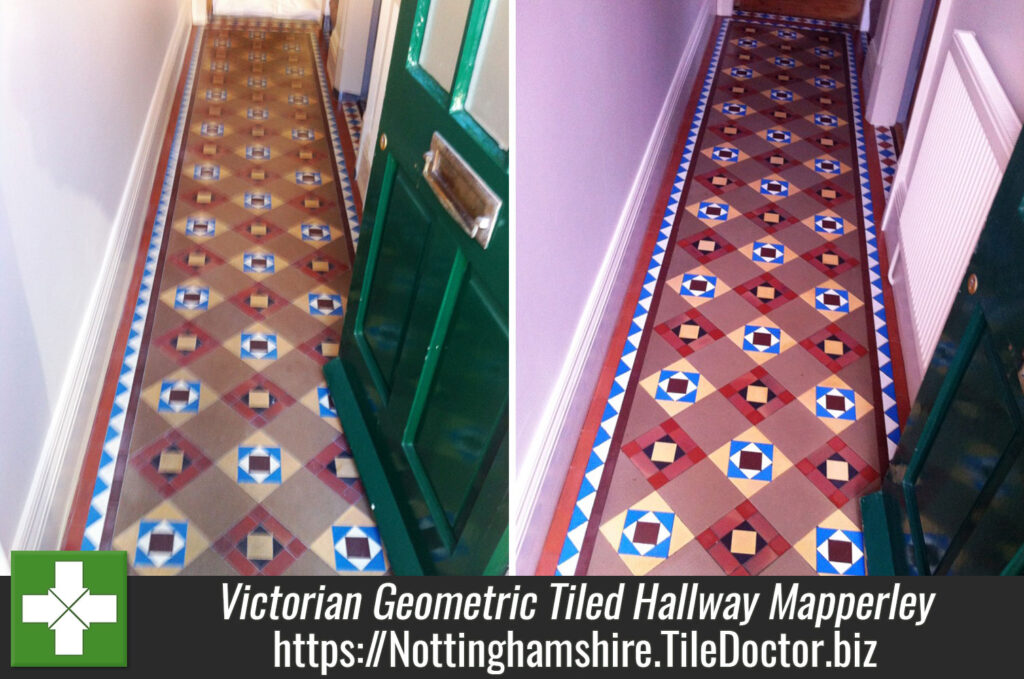Dilapidated Edwardian Tiled Porch Restored to New in West Bridgford
I was asked by a client in the West Bridgford area of Nottingham to renovate the Edwardian era tiling in the porch at the front of their property. The tiles were laid in a classic black and white Chequered pattern and were now in a bad state having been exposed to the elements, they had also suffered extensive damage to the tile and screed foundation.
It’s very difficult to quote for restoration work like this from photographs so I arranged to visit the house, survey the floor and take some detailed notes. From this I was able to create a detailed quote which they were happy to go ahead with.
 |
 |
 |
Repairing and Cleaning an Edwardian Tiled Porch
Work started by removing the damaged tiles so the damaged sections screed could be removed and replaced. Once the base was ready replacement vintage tiles were cut to shape and the correct size where needed and then reinstated.
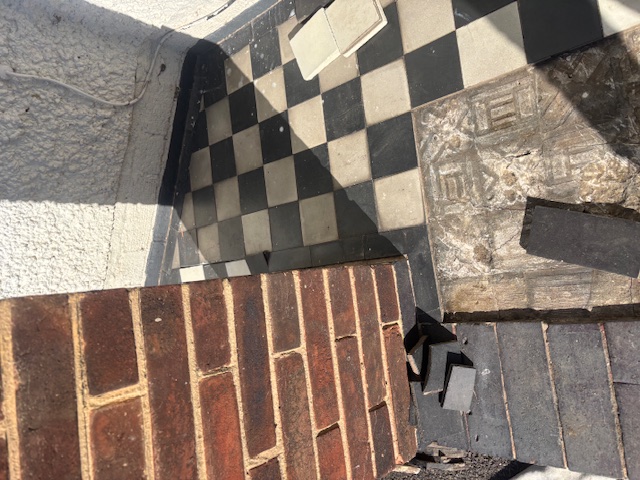 |
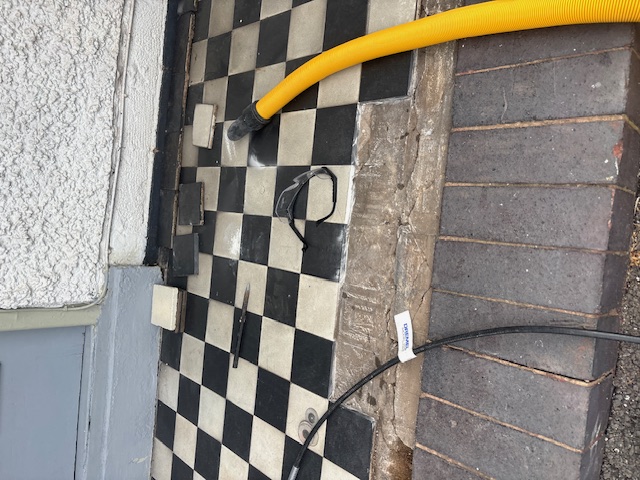 |
Once the replacement tiles had been laid the tiles were grouted in to make the floor solid, and ready for the next step of restorative cleaning.
With the tile and grout set a low-moisture gel clean process was applied using Tile Doctor Oxy-Gel to break down the old floor coatings and soiling. After allowing this product to soak into the tile for ten minutes it was worked in using Tile Doctors abrasive Silicon Carbide Brushes.

The resulting slurry was removed, and work progressed onto the next stage which was to apply Tile Doctor Acid Gel to further clean the tile. This product also treats inherent efflorescence staining and neutralises the alkaline Tile Doctor Oxy Gel used earlier. Again, this was worked in using Silicon Carbide Brushes.
The slurry was removed as before and the floor wiped down with microfibre cloths, that had been sitting in water with diluted Tile Doctor Grout Clean-Up.
Sealing an Edwardian Tiled Porch
The floor was allowed to dry overnight and then sealed the following day with Tile Doctors X-Tra Seal which is a colour enhancing impregnating sealer. This sealer allows for vapour transmission which is ideal for period floors that do not have a DPM (damp proof membrane) to prevent moisture rising through the tile. Air movers were used to speed up drying times.
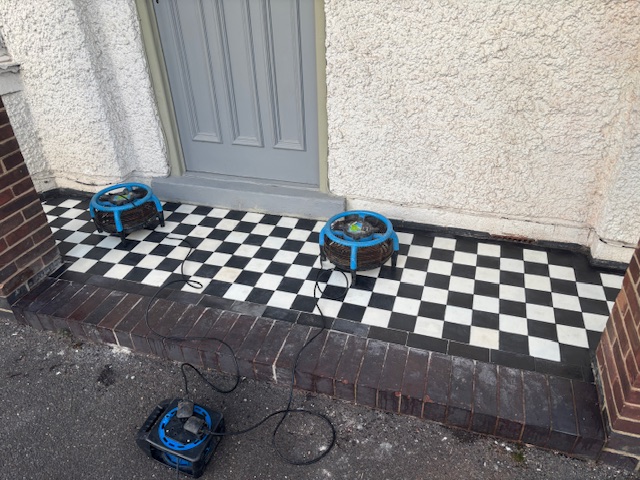
The sealer occupies the pores in the tile thereby preventing dirt from becoming ingrained in the tile and keeping it on the surface where it can be easily cleaned away. Once completed I recommended Tile Doctors Neutral Cleaner for regular cleaning and left a bottle with the client along with the instructions on how to use it.

My client was very happy with the newly restored porchway which now created a much more inviting entrance that I’m sure has added value to the property.
Professional Restoration of an Edwardian Tiled Porch in Nottinghamshire
Dilapidated Edwardian Tiled Porch Restored to New in West Bridgford Read More »


